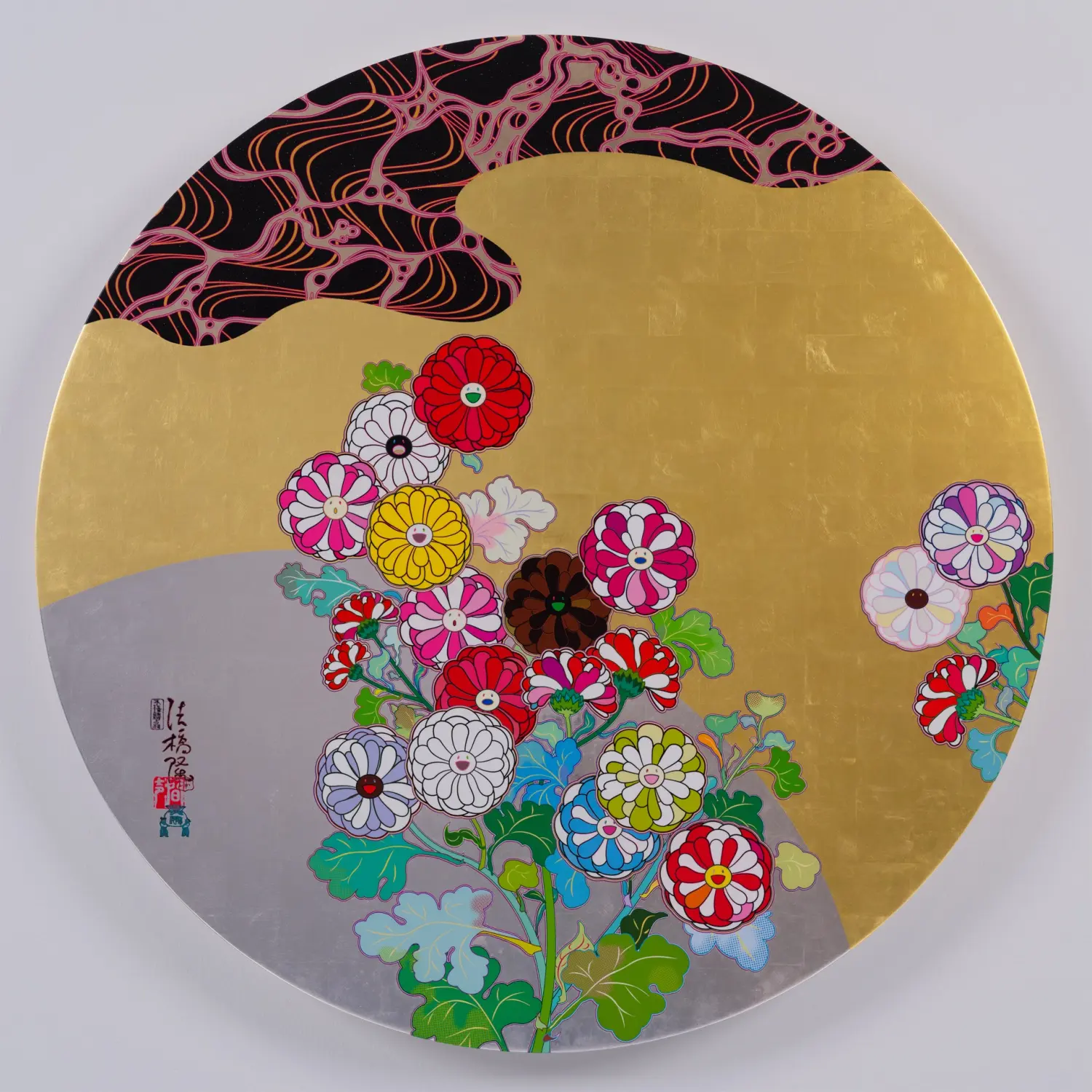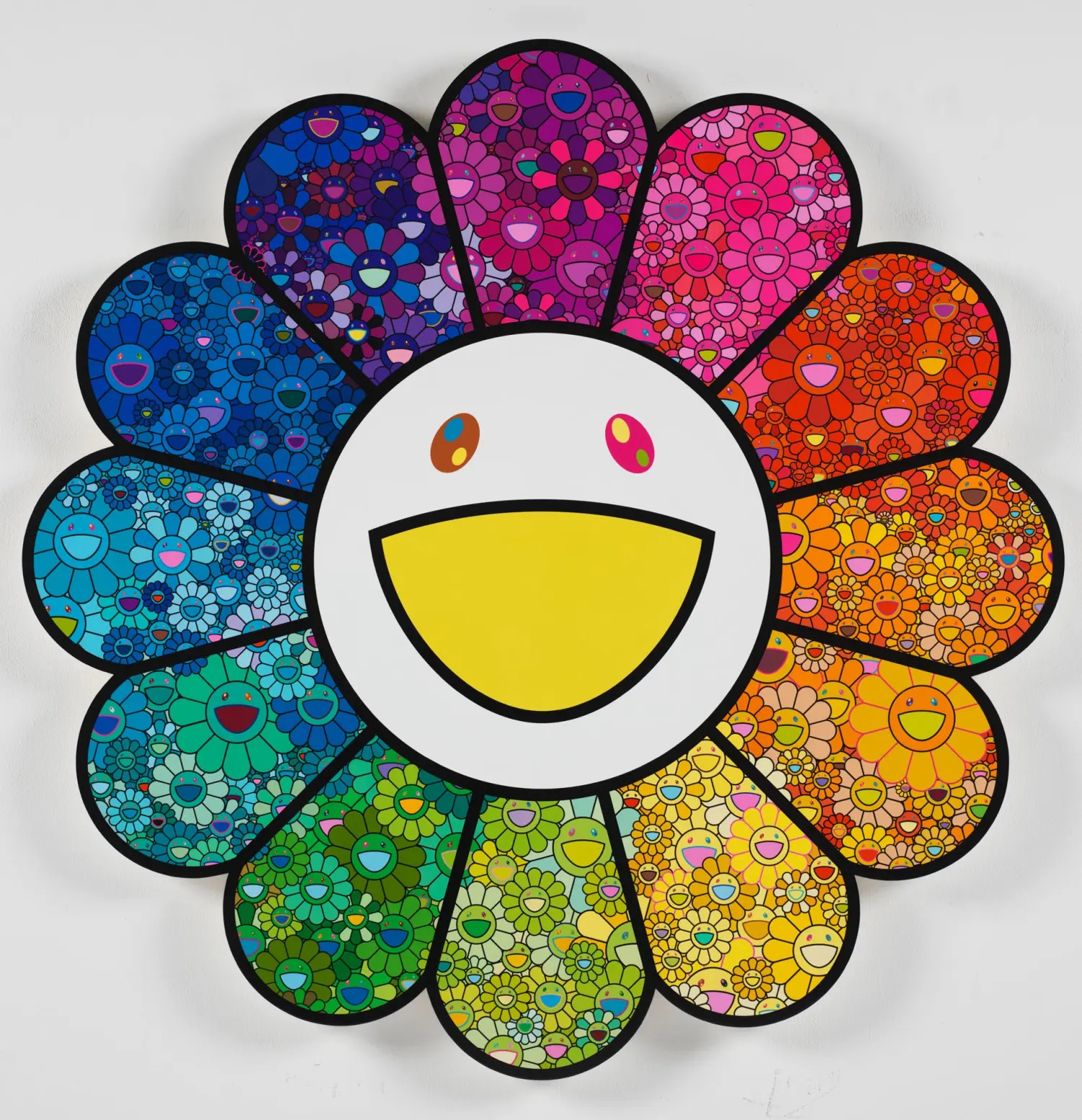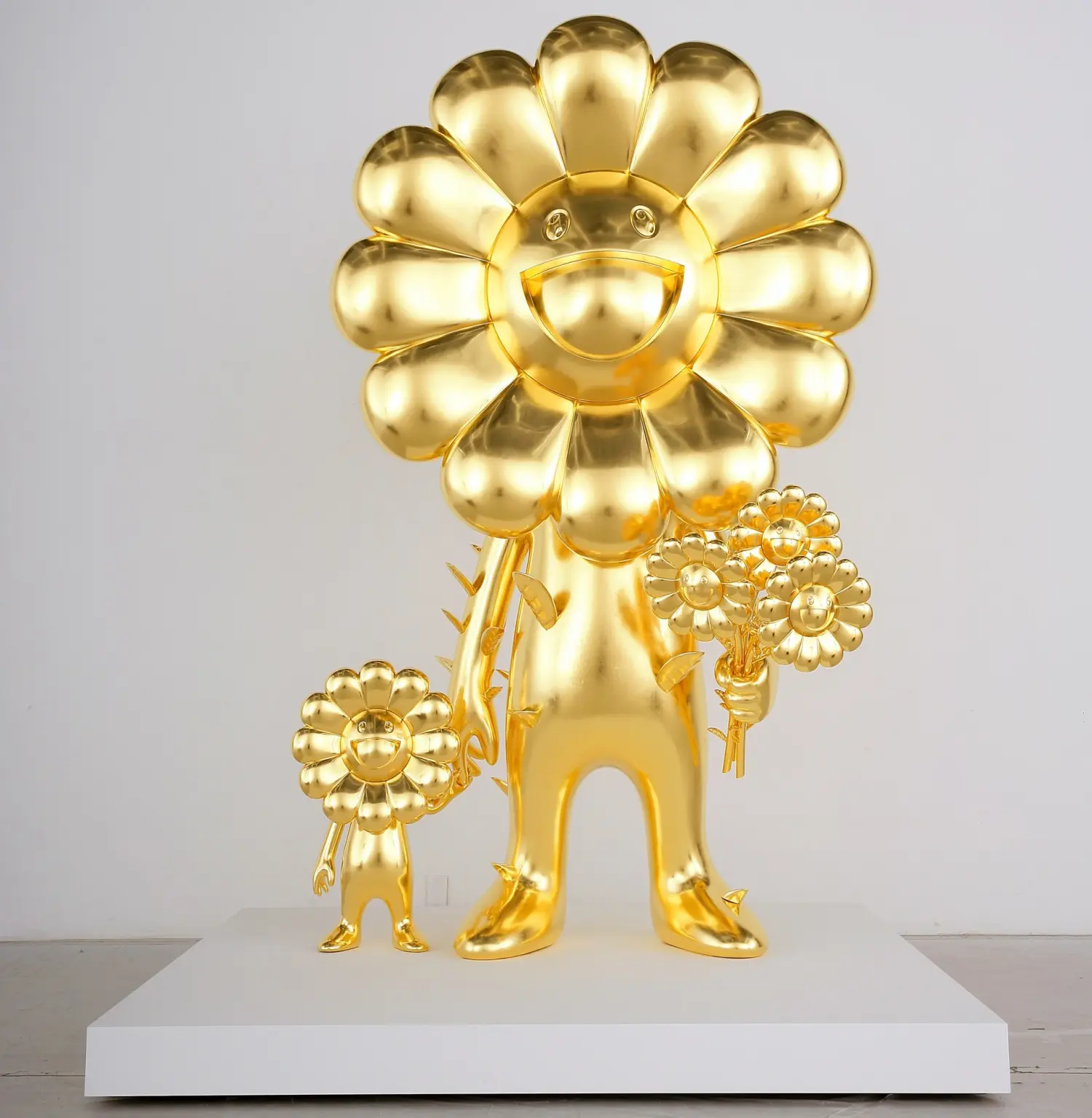Takashi Murakami
- Christie Rose

- Nov 2
- 2 min read
Updated: Nov 2
Where/when:
Japanese Artist, born in 1962
Medium(s):
Painting
Often Acrylic
Sculpture
Lithographs
Animation
Merchandise and products
Fashion collaborations
Digital art and NFTs
Graphic design for album covers
Impact:
Takashi Murakami, who has a PhD in nihonga painting, combines the most cutting-edge techniques with the precision and virtuosity of traditional Japanese art. Inspired by anime and character culture, his irresistible world is peopled by monstrous and charming characters alike, facetiously portrayed as descendants of past myths. His theory of Superflat aesthetic, which he introduced in 2001 with the trilogy exhibition he curated (the third part was titled “Little Boy,” a reference to the code name for the atomic bomb dropped on Hiroshima in 1945), attempts to blur the boundaries between popular art and high art; Superflat movement has explored the evolution of Japan’s understanding of its post-Hiroshima social condition and the interrelationships between vanguard art, manga and anime, and their forerunner, Nihonga. The absence of perspective, the two-dimensionality of ancient Japanese art, filters into every medium.Since his first monographic exhibition outside Japan in 1995 at Perrotin, Murakami has achieved recognition as one of the most prominent contemporary artists of his time, and his work has been featured in numerous solo exhibitions at museums and art institutions throughout the world.
What is ‘superflat’, Murakami’s art theory?
Murakami gained a level of critical appreciation in 2000 when he first espoused his now-famous ‘superflat’ theory. This amounts to a manifesto of his whole practice.
According to the theory, Murakami’s work is a fitting continuation of Japanese imagery that goes as far back as the great ukiyo-e (‘fleeting world’) prints of the Edo period. This is for two main reasons. First, because — unlike Westerners — the Japanese have traditionally seen no distinction between fine and commercial art; and second, because linear perspective is not part of the Japanese tradition.
As such, the country’s art can be considered ‘flat’ in more ways than one — and, therefore, superflat.











Comments